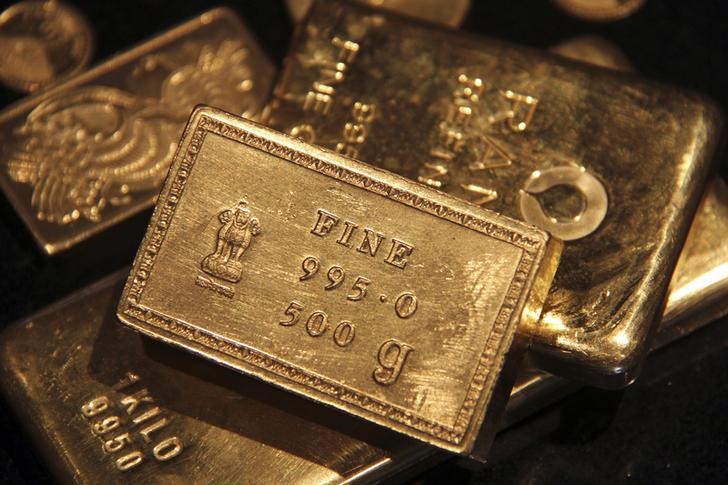Gold up 4th Week in Row, Triumphing Over Inflation Data
2022.08.12 22:13

By Barani Krishnan
Investing.com — Gold’s naysayers have done all they can to pooh-pooh the yellow metal’s return to $1,800.
But the negative talk hasn’t been able to stick long enough to do the damage they intended, despite gold’s occasional bearish forays into $1,700 territory this week.
At Friday’s settlement, both futures of gold on New York’s Comex and the spot price of bullion were back in the $1,800 zone, finishing up for a fourth straight week.
“This will be an interesting test for gold as $1,800 could represent an interesting rotation point from a technical perspective if there is no desire to see it above here but ultimately the case for bullish gold remains quite compelling,” said Craig Erlam, analyst at online trading platform OANDA.
“The fact that it continues to hold onto the bulk of the gains without any significant correction may suggest there’s still an appetite for it, with slower tightening seen as a favorable outcome,” Erlam added.
Comex’s benchmark gold futures contract, December, settled at $1,815.50, up $8.30, or 0.5%, on the day. For the week, it rose almost 1.5%.
The spot price of bullion, more closely followed than futures by some traders, was at $1,800.75 by 14:50 ET (18:50 GMT), up $11.21, or 0.6%, on the day. For the week, it rose 1.5%.
Both Comex gold and the spot price have gained more than 5% over the past four weeks.
Gold’s gains came after the dollar — which is a contrarian trade to the yellow metal — weakened this week on ebbing U.S. inflation data.
The Consumer Price Index, one of most universally-followed gauges on inflation, showed zero growth in the United States for July after a 1.3% rise in June. Over the year to last month, the so-called CPI also slowed, expanding by 8.5% from a previous 9.1%.
The U.S. Producer Price Index, meanwhile, fell 0.5% in July, reinforcing the theme of inflation in retreat from four-decade highs.
Gold is supposed to be a hedge against inflation but it has not been able to hold up to that billing for most of the past two years since hitting record highs above $2,100 in August 2020. One reason for that has been the rallying dollar, which is up 11% this year after a 6% gain in 2021, on expectations of strong rate hikes by the Federal Reserve to curb inflation currently at near four-decade highs.
The dollar fell this week despite various Fed officials saying the slowdown in July inflation won’t be enough to make them go easy with rate hikes.
The Fed is “far, far away from declaring victory” on inflation, Minneapolis Federal Reserve Bank President Neel Kashkari said at this week’s Aspen Ideas Conference.
Kashkari said he hasn’t “seen anything that changes” the need to raise the Fed’s policy rate to 3.9% by year-end and to 4.4% by the end of 2023.
The rate is currently in the 2.25%-2.5% range.
San Francisco Fed President Mary Daly, in an interview with the Financial Times, also warned it is far too early for the U.S. central bank to “declare victory” in its fight against inflation.
However, Daly said that a half-percentage point rate rise was her “baseline” but did not rule out a third consecutive 0.75% point rate rise at the central bank’s next policy meeting in September, according to the report.
Calling inflation “unacceptably” high, Chicago Fed President Charles Evans said he believes the Fed will likely need to lift its policy rate to 3.25%-3.5% this year and to 3.75%-4% by the end of next year, in line with what Fed Chair Jerome Powell signaled after the central bank’s latest meeting in July.








